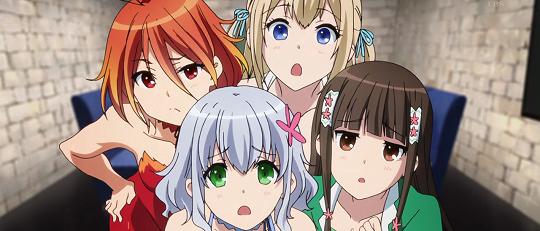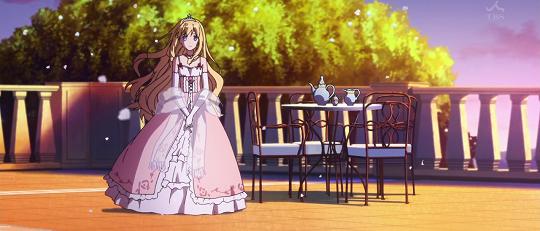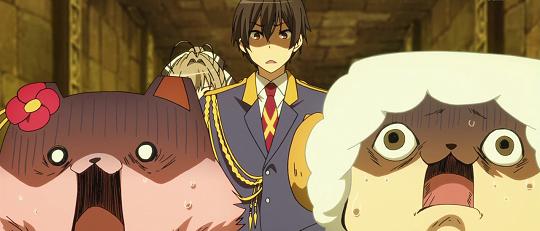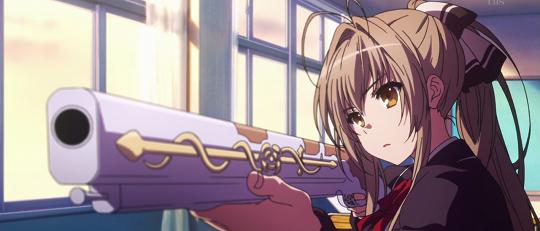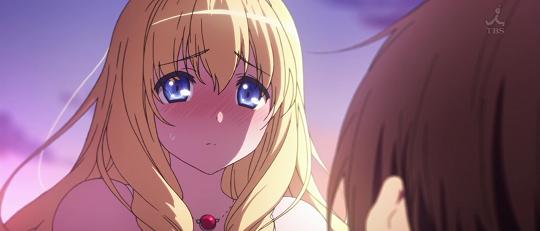As the opening to Amagi Brilliant Park is keen to point out: this isn’t a fairytale. The series certainly has fairytale elements to it with a princess, a castle, magic and a prince, but as Philip Pullman pointed out in interviews after his reimagining of Grimm’s fairytales:
there is no backstory, no complex motives, no internal life.
And those are things that Amagi has in spades, almost to its detriment. The story of an ailing theme park and the challenges faced by Seiya Kanie in bringing it back to popularity is, at it’s core, an old underdog tale. There’s the time limit to achieving the goal - 50,000 yearly guests by the end of July - the motivation - Seiya knows the owner of the park from his childhood - and the quirky, offbeat cast. To its credit, the series tells that story remarkably well and by the end of the twelfth episode you could leave feeling like you’ve experienced a jolly old yarn. Odd then that the series is in fact thirteen episodes long…
Not content with the leaving the story at its logical, if in some regards unsatisfying, conclusion, Kyoto Animation sees fit to provide us with what for any other series would be an OVA episode, only this time tacked on to the end of the TV broadcast. It’s nothing to be sniffy about but it is mildly peculiar.
Which brings us back to the backstory, motives and internal life that is antithetical to fairytales. Early on it’s made abundantly clear that Seiya, with his boundlessly confident swagger and acerbic tongue, is this way partly due to his time as a child actor. It’s a fine bit of background and instantly gets mentally filed away into the “foreshadowing” pigeon hole. Only it’s barely even mentioned again, meaning it’s odd that it was even brought up in the first place. It’s not the only extraneous tidbit either. Magical pendants that enable the creatures of Mapleland - a bonafide magical kingdom - to look like ordinary humans rather than the costumed denizens you ordinarily see wandering themeparks; don’t take them off! Right then, we won’t. Relationships, motivations and mystical powers, all are teased then scattered around like so much opening day confetti that it’s genuinely surprising the central story isn’t bogged down by all those dangling threads.
Well, not so surprising when you consider that Yasuhiro Takemoto is directing. Probably best known for unceremoniously taking over the reins of Lucky Star from Yutaka Yamamoto, Yasuhiro has directed many KyoAni breadwinners including Suzumiya Haruhi, Hyouka and Full Metal Panic? Fumoffu, the latter of which goes someway to explaining the presence of the Fumoffu mascot here. It is a step further than the studio usually takes though when they design and write for even inconsequential characters, giving birth to pockets of niche fans who yearn to find out more about, for instance, the other members of K-On!’s classroom. Here though the narrative seems unable to cram in enough of the light novel source to do it justice, leaving a whole lot of rifles on the wall doing nothing but conspicuously gathering dust. Perhaps though, as with the sequel movies the studio is so keen to produce, it may serve well for the franchise’s future.
If that’s the case then it definitely didn’t seem that way with the first episode which has some of the most brazen fan service yet seen in one of their productions. And not just cheeky, relatively good natured titillation that has been in everything from Chuunibyou to Haruhi, but blatant pandering nudity that feels like a desperate grab for viewers in the mad tumult of the season start. Thankfully it’s never as egregious in subsequent episodes but there are a few too many conspicuous bath scenes with poster-girl Isuzu and a few too many scenes with the pneumatic Sylphy cavorting around the scenery.
These are relatively minor points though for a series that does wonders with a hugely varied cast and the core story supporting it. It manages tenderness and comedy with aplomb and it demonstrates the kind of typically assured production that means even Seiya, a brash and narcissistic brat, is able to be understood and enjoyed. There are misses here and there - the lecherous old men who take the form of a ram and candy pink cat are most prominent - just as there are with individual episodes - the magic suit story springs to mind although that may be personal distaste with doppelganger plotlines - but by and large the series works.
And like every KyoAni production it looks gorgeous while doing it with colourful, pin-perfect rendering of the different attractions and creatures bolstered by hugely expressive animation with everything from dancing to fighting. When you take into account the opening and ending themes, the former of which sees the return of the distinctively voiced Akino and a melody that I’ve been idly whistling for longer than I would care to admit, it’s clear that this is another accomplished series. Like the second series of Chuunibyou before it, doesn’t quite reach the heights of prior studio productions, but is uncluttered and hugely enjoyable regardless of its foibles.
I have no doubt that if Amagi Brilliant Park does well enough in whatever metric is used to measure anime success we’ll see more of it in the near future. Perhaps then it can answer some of the lingering questions like why Isuzu always seems so existentially unhappy. Or what happened to that wizard. Or what happened with Moffle and Latifah. Or why Latifah looks like Ai from Kyoukai no Kanata. Or-
